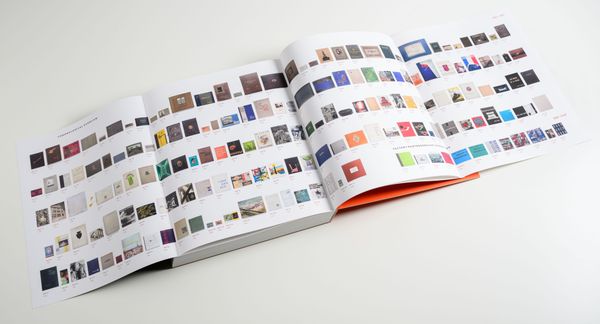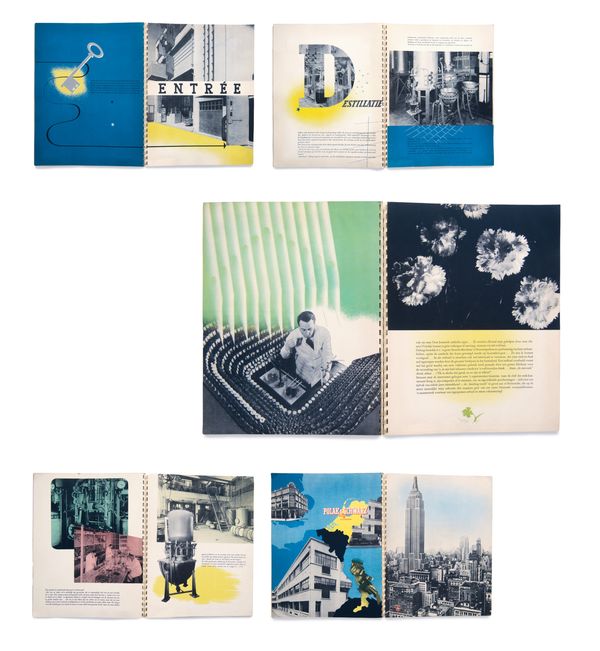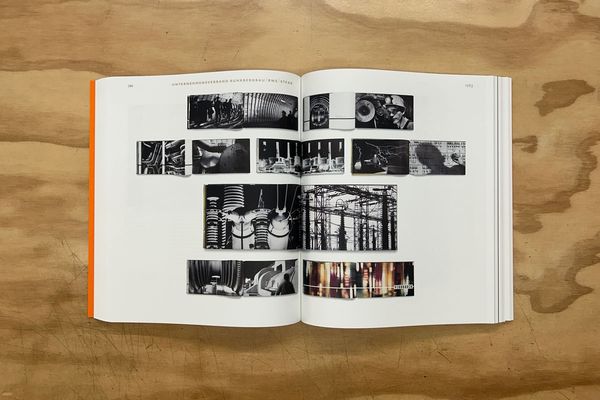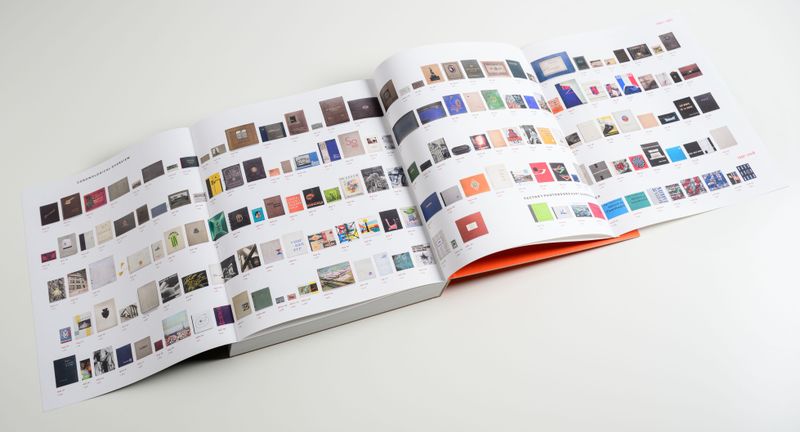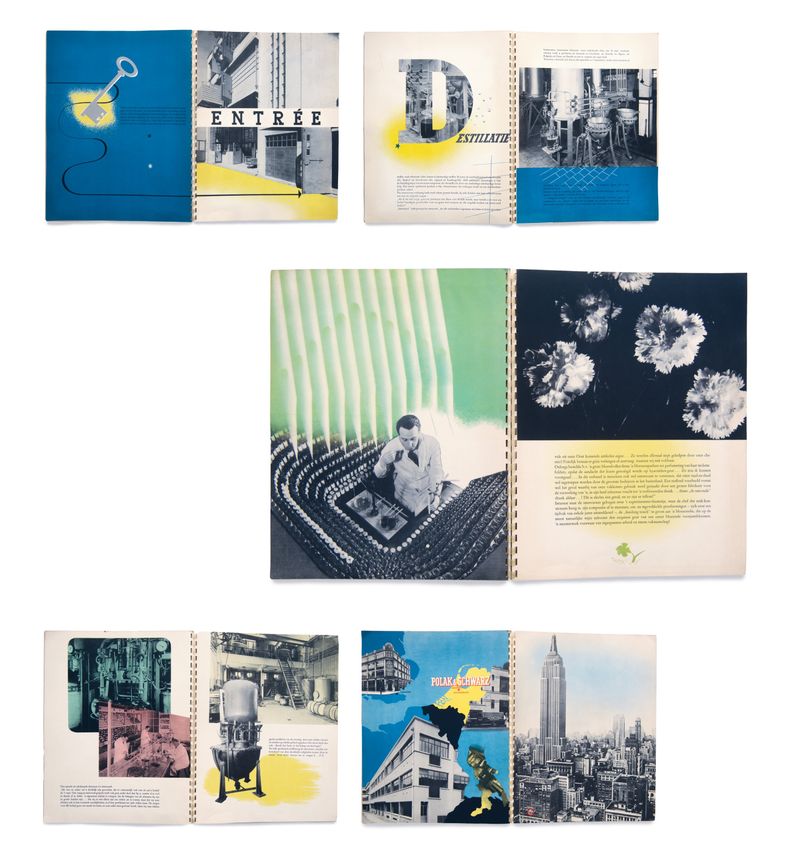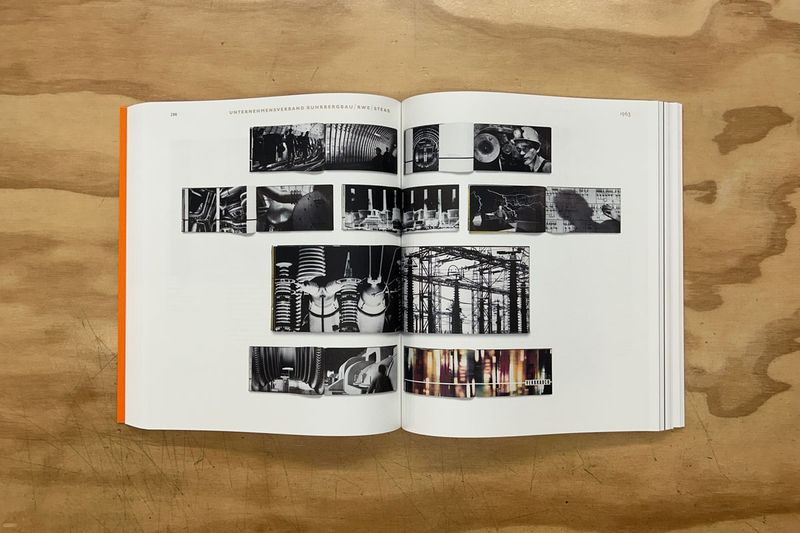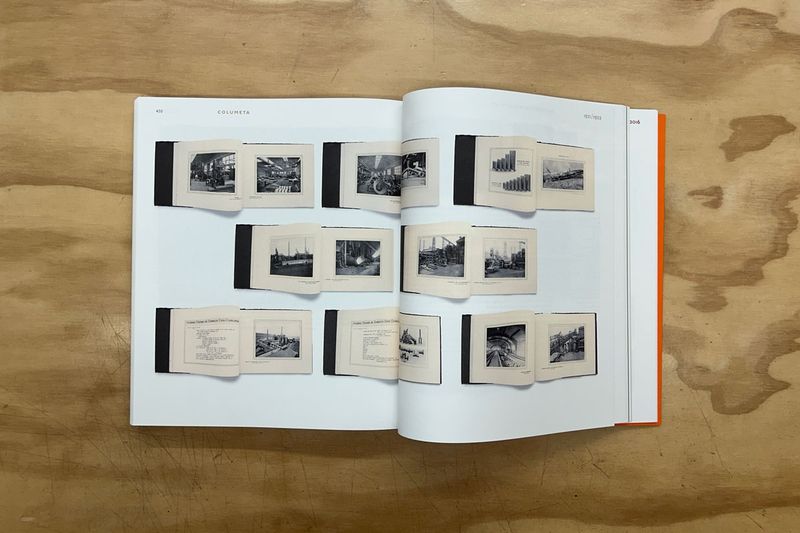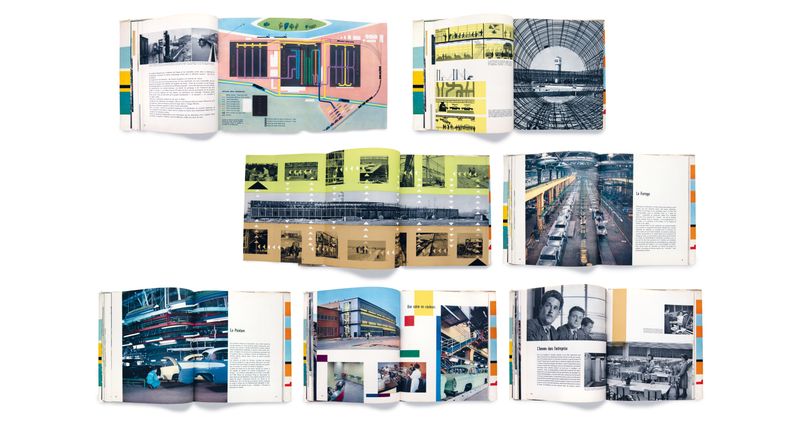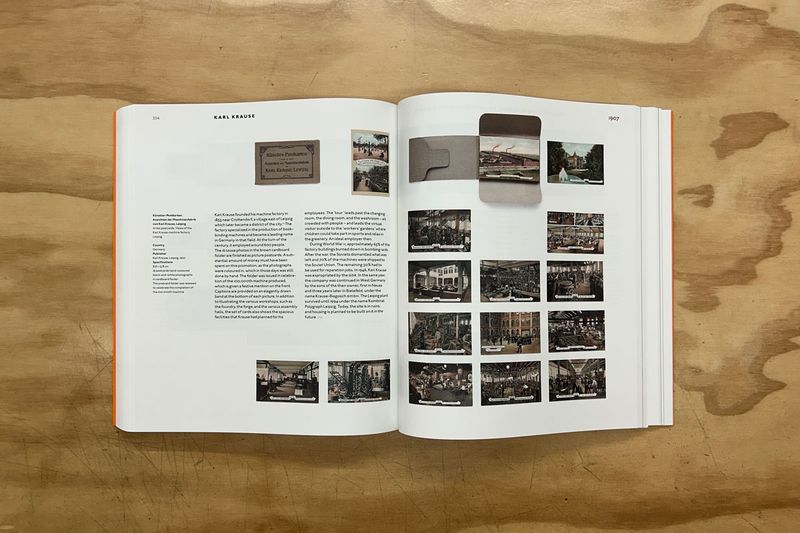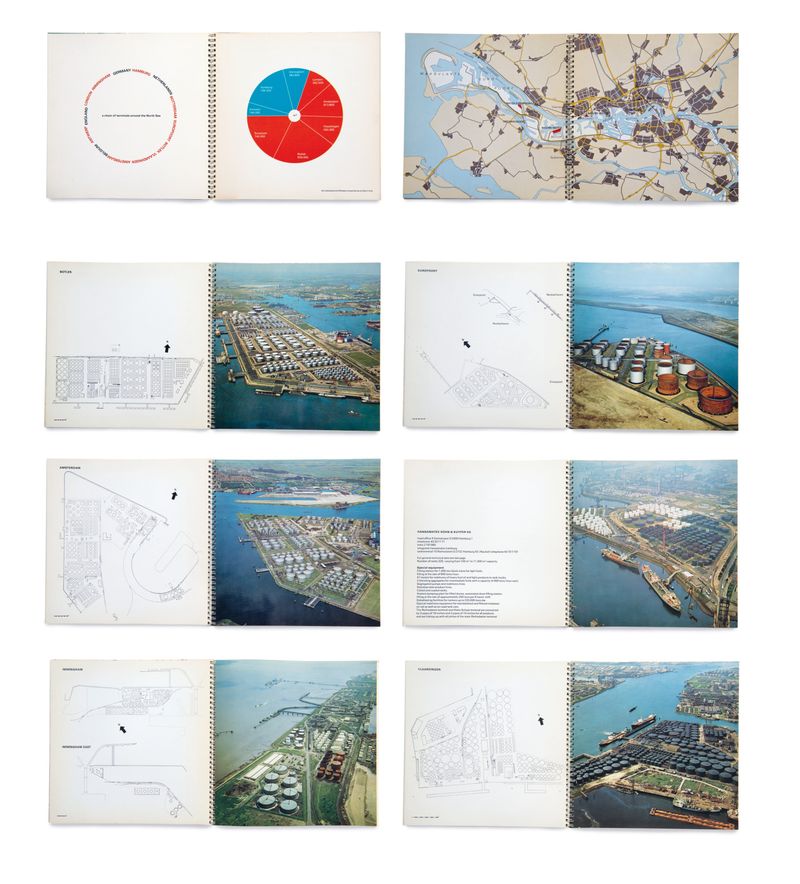Photobook Review: Factory Photobooks
-
Published27 Jun 2024
-
Author
- Topics Photobooks
Factory Photobooks is the latest in a long line of Photobook Histories, and the history is that of the photobook factory. In a series of spreads highlighting the book is a window onto the economic and social role of the factory.
That history begins with the first book, the Brown Hoisting and Conveying Machine Company, Cleveland, Ohio, USA. It’s a book that details the vital move away from the time-consuming and laborious process of loading bulk cargos (and iron ore in particular) by hand. Where once individual dock workers would carry sacks of ore from the hold, walk across gangplanks and load them into the waiting wagons, this book shows the new bucket carrier and tramway system of moving ore.
It’s a process that revolutionised docking practice, one almost comparable to containerisation, and the book is essentially a sales catalogue for the immense machinery necessary for the process.
With its panoramic views and its folded pages, it is also an example of the fantastic designs found in these books. No expense has been spared in the making of these books and it shows.
There are books that detail the transition from steam to electricity in factories, a development that opened up factory design allowing more open, brighter spaces, and an increasingly pressurised workforce.
The fall of the cotton industry, the rise of refrigeration and steel-making, the globalisation of mining interests, the suprematism of the car industry, and the development of the food and drink industries are all detailed. And as the factory develops so do the themes highlighted in the photobooks.
Côte d'Or shows the process of the chocolate-making business ‘from the harvesting of the beans to the finished product, wrapped and waiting for purchase.’ So you see the beans harvested in the Belgian Congo getting pressed, processed, and transformed into wrapped bars of chocolate by immaculately attired workers.
This highlighting of the hygiene of the factory, of the discipline and cleanliness of the workers was an essential element of the factory photobook, proving that the quality of ingredients in food products, the efficiency of the engineering in car factories, the cleanliness of the cooling towers are all put to the fore.
The books also have a subtext of political and colonial history. Côte-d'Or sources it's chocolate in both British and Belgian colonies, textile companies have inevitable links to the USA and the slave trade, and tyre companies source their rubber in the Dutch East Indies. There are books that are flavored by Nazi ideology, Industry is implicit in mutilation, genocide, and slavery, not to mention environmental destruction. These books shine a light on both how these factors were glossed over in the past and how they are glossed over now.
Throughout the books, there are different strategies for showing workers. Some books use a traditional magazine narrative format with establishing shots, portraits and details that show the company’s concern for worker welfare. Others show the complexity of the factory floor, with different groups of workers labouring like ants in different corners of the shopfloor. There are wonderfully lit large format portraits of the factory floor pix by Otto Daettwyler, where the workers and machinery look like extras in a science-fiction film, images that (like those of the great British industry photography, Maurice Broomfield) highlight the optimism of the post-war decades when people really did believe in the inevitably of economic and social justice.
There are sections on German factory photobooks, printing developments, the phenomenon of the factory tour and the accompanying souvenir albums that you’d get after your tour of a Hershey’s, Ford, or Telefunken factory, as well as a chapter on Dutch industrial photobooks, with designers like Piet Zwart quoted as saying, ‘We as Dutchmen were especially strong in one area: photography as a new visual medium and its activist application, such as in advertising’.
Other designers like Jurri Schrofer clarified ideas of what a photobook could be, saying that ‘The photobook should be seen as the visualisation of a series of thoughts – an insight. Alternation and repetition, contrast and coherence, large and small, beginning and end: all are elements in the syntax that shapes the book. The criterion is not only that a documentary or a report is created – it’s also that the work conveys an understanding.’
So there are well-known books like Plem, which details in glorious colour montages the electrical distribution activities of the company, or the constructivist-influenced design of Piet Zwart’s NKF, or the 35mm intensity of Ed van der Elsken applied to the shop floor.
In some cases that understanding can be unconventional, as in Sükker, a 1976 publication showing the workers of the Lee Cooper Clothing Company. Published on International Workers’ Day in 1976, it has the collaborative chaos of one of Vincen Beeckman’s books with its sketches, fragments of text and image overlays. ‘In keeping with the counterculture, the attitude of Sükker, is that of a ‘happening’’, reads the accompanying text. It’s a happening that ended 5 years later when the ‘factory was closed and production moved to Tunisia.’
And that theme of closure is where the book ends, with a section on Bart Sorgedrager’s commemorative photobooks, books that were commissioned for when the factory gates would be shut for one last time, to be given as a gift to the departing workers on their final day.
He photographs the workers of retired nuclear power stations, gunpowder factories (where he couldn’t use flash for fear it would spark an explosion), cigar factories, 3 Unilever sites (one of which produced peanut butter – which is called pinda kaas or ‘peanut cheese’ in Dutch, who knew apart from the Dutch), fork-lift truck factories, and a gold dealer.
Sorgedrager photographs, the factories close, sites are decommissioned, industry is moved overseas for economic or environmental reasons, jobs are lost and the land is repurposed, most often for unaffordable housing. And that is ultimately what this book is about; not photography, or photobooks, but the broader story of the land we live on, the jobs we do, and what we do with the resources the earth has to offer. It’s the story of our life, and ultimately our death, all wrapped up in a beautifully designed and photographed package.
--------------
Editor: Bart Sorgedrager
Design: Typography Interiority & Other Serious Matters
24 x 29 cm
504 pages
--------------
Bart Sordrager has concentrated on photobook production since the late 1980s. As a connoisseur and collector of photo books, he consciously connects with the rich history of photography and design in the Netherlands, and is renowned for his commemorative photobooks of factory closures, work that connects to the history of industry, land, and social housing.
Colin Pantall is a photographer, writer and lecturer based in Bath, England. His next online courses begin in September, 2024. More information here. Follow him on Instagram.
